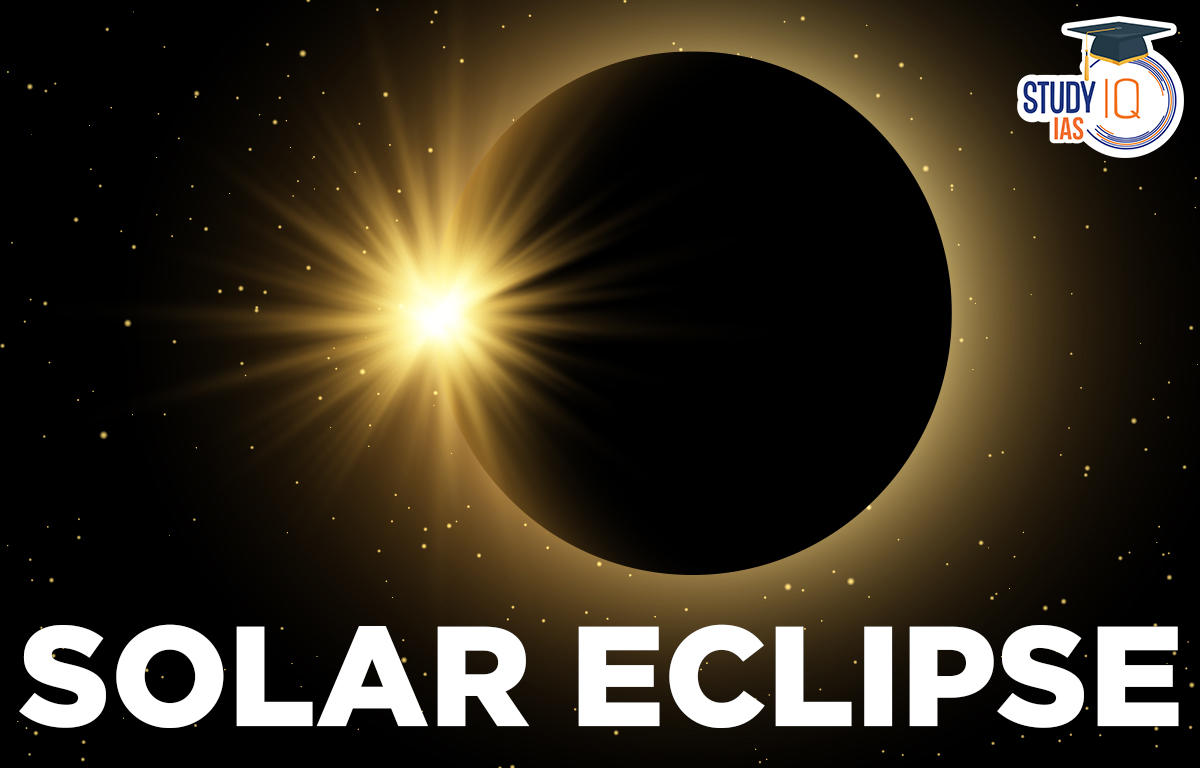Table of Contents
Solar Eclipse
On April 20, 2023, there will be a solar eclipse. The occasion will mark the first solar eclipse of 2023. There will be several locations where people can see the solar eclipse. India won’t be able to see the solar eclipse, though. Four eclipses are scheduled for the year 2023. These would consist of two eclipses of the sun and two eclipses of the moon. Solar Eclipse 2023 is an important part of Current Affairs which an important subject in UPSC Syllabus. Students can also go for UPSC Mock Test to get more accuracy in their preparations.
Solar Eclipse Meaning
An extremely rare occurrence is a hybrid solar eclipse, in which the eclipse progresses from an annular to a total and back as the moon’s shadow crosses the Earth’s surface. The partial solar eclipse can be seen over a neighboring area that is thousands of kilometers wide since the totality follows a small path across the surface of the Earth. Hybrid solar eclipses are extremely unlikely. In the whole 21st century, hybrid eclipses have only occurred in 3.1% of solar eclipses.
Solar Eclipse 2023 Timing
There are between two and five solar eclipses per year. The moon crossing in front of the sun is a cosmic event. The moon casts a shadow over the earth as a result, blocking the sun’s light from reaching the planet. As a result, this shadow is known as the “Umbra.”
The length of the Solar Eclipse is influenced by the motions of the sun, moon, and earth. A total eclipse often lasts 7 minutes or longer. The moon takes a month to complete one rotation of the earth. The eclipse does not, however, occur every month. This is so because the orbital planes of the earth and moon are different with respect to the sun. As a result, the solar eclipse happens when the moon passes in front of the sun.
Solar Eclipse Types
When the moon is full and the sun and earth are in a straight line, there will be a solar eclipse. There are primarily three types of solar eclipses.
Annular Solar Eclipse
It typically happens when the moon is the furthest away from the earth. As a result, the moon seems tiny and partially blocks the sun. The sun is still visible, though. As a result, it looks externally as a golden ring. About 12 minutes or longer pass during the annular solar eclipse. It might also resemble a total solar eclipse. However, the moon is too small to totally block out the sun.
The umbra’s tip won’t touch the earth if the moon is positioned at a greater distance. The antumbra descends to the surface of the earth during this kind of eclipse. Everyone on Earth in this area may therefore see the ring-like structure encircling the moon.
Total Solar Eclipse
Only a small portion of the earth can see it. The diameter of the earth in this phenomena is around 400 times greater than that of the moon. However, the distance varies from one eclipse to the next.
The overall view of the sun from Earth is then completely obscured by the new moon. In between 18 months, this occurs. The moon also makes numerous kinds of shadows. Umbra and penumbra are these shadows. The shadow’s deepest shade is referred to as the umbra in this context. Additionally, a penumbra, or a lighter shadow, surrounds it. The sunlight is only partially obstructed in the penumbra.
You must be in the path of the umbra to see the solar eclipse. The sun’s disc will then start to dwindle and take on the form of a crescent. The sun is fully hidden by the moon’s shadow. As a result, the total eclipse only lasts a short time. The longest total eclipse that has yet to occur only lasted up to 7 minutes.
Partial Solar Eclipse
Additionally, the penumbra passes overhead when the partial solar eclipse begins. When the sun, moon, and earth are not perfectly aligned, this occurs. Because of this, the moon’s shadow leaves a small portion of the sun visible.
The penumbra zone, which is located farther from the poles, prevents a comprehensive view of the eclipse. Only a little portion of the sun is still protected by this. It implies that in order to see the partial effects of the solar eclipse, you must go closer to the path.
Solar Eclipse Effects
Depending on the nature and location, an eclipse can have a number of impacts. These are some noteworthy impacts of the solar eclipse, though. The earth’s surface ozone level decrease as the eclipse nears its culmination. Additionally, the earth’s atmosphere cools. Ozone levels are reported to drop by 30% to 60%.
During the solar eclipse, the earth’s temperature also fluctuates. Along with that, there is a substantial change in the humidity and wind speed. Additionally, total solar eclipse areas have high magnitude ranges for their magnitudes.
Solar Eclipse UPSC
One of the important celestial phenomena is the solar eclipse. During this, the earth, moon, and sun all revolve in a straight line. While orbiting the earth, the moon passes in front of the sun. As a result, the moon obscures the sun, casting an earthly shadow. Solar eclipses come in three different varieties: annular, partial, and total. As a result, the eclipse causes a drop in temperature, a rise in magnitude, and a decrease in ozone levels. During the solar eclipse, temperatures and humidity levels drop as well. Students can read all the details related to UPSC by visiting the official website of StudyIQ UPSC Online Coaching.
























 WhatsApp
WhatsApp